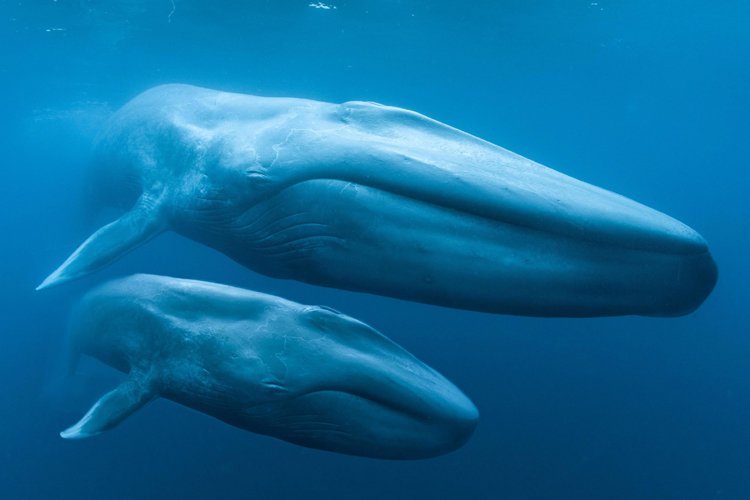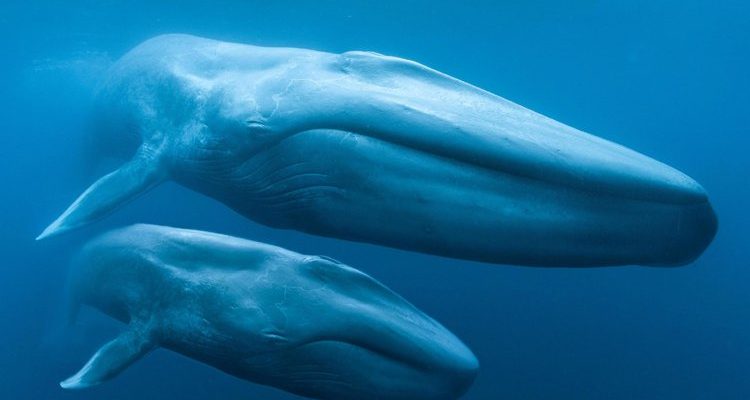
In this article, we’ll dive deeper into ten cool facts about the blue whale that might just surprise you! From their unbelievable feeding habits to their unique communication skills, you’ll discover just how remarkable these marine mammals really are. So grab your coffee, settle in, and let’s explore the fascinating world of blue whales!
1. The Largest Animal on the Planet
You might have guessed it, but the blue whale holds the title for the largest animal ever known to have existed. We’re talking about individuals that can reach lengths of up to 100 feet! That’s as long as three school buses lined up end to end or the size of a 747 airplane!
Just imagine the sheer mass of a blue whale; some even weigh as much as 200 tons—that’s equivalent to about 30 elephants! This massive size gives them an awe-inspiring presence in the ocean. When they surface for air, their blow can reach heights of 30 feet, making it quite a sight for anyone lucky enough to witness it.
2. A Unique Vocalization
Here’s the thing: If you think that a whale’s communication is just a series of songs and clicks, think again! Blue whales are known for their deep, resonant calls, which can be heard for hundreds of miles underwater. They’re like the opera singers of the ocean, with their vocalizations reaching between 10 Hz and 40 Hz.
These powerful sounds serve various purposes, including navigation, finding food, and even mating. Imagine being able to talk to someone on the other side of the city just by using your voice—how cool would that be? This impressive vocal range makes blue whales incredibly fascinating, especially when you consider how vital sound is in their underwater world.
3. Eating Habits: Filter Feeders
You might be wondering what such a massive creature eats. Surprisingly, blue whales are filter feeders. They primarily feast on krill, tiny shrimp-like animals. During feeding season, a single blue whale can consume up to 4 tons of krill a day!
To feed, they take in enormous gulps of water and then push it out through their baleen plates, which trap the krill inside. It’s like using a giant strainer to catch all the good stuff! This feeding method is both efficient and effective, allowing them to sustain their massive size while maintaining a relatively calm lifestyle in the ocean.
4. A Slow Reproductive Rate
Despite their large size, blue whales have a slow reproductive rate. Female blue whales usually give birth to just one calf every 2–3 years after a lengthy gestation period of about 10 to 12 months. When the calf is born, it can weigh around 2–3 tons and is approximately 23 feet long—talk about starting off big!
This slow reproductive cycle poses challenges, especially for their populations. With threats like climate change and ship strikes, the blue whale population is still recovering from commercial whaling in the 20th century. Protecting their habitats and understanding their reproductive patterns are essential for ensuring their survival.
5. Migrations: The Long Journey
During the year, blue whales partake in long migrations. They typically spend summers in nutrient-rich polar waters to feast on krill and then migrate to warmer waters for breeding in the winter. This travel can cover thousands of miles, making them one of the most migratory marine mammals.
Think about it: it’s like taking a road trip across the country just to find the best spots for a buffet! They plan their trips based on ocean currents and the availability of food, showcasing their adaptability to their environment.
6. Camouflage: A Natural Blending
Have you ever noticed how a blue whale’s color helps it blend into its surroundings? Their skin appears a beautiful, mottled blue-gray, which can act as camouflage against the ocean depths. This coloring helps them evade predators, such as orcas, and aids in surprise hunting tactics.
Moreover, their unique patterns and markings are as individual as fingerprints. Researchers often identify them based on these unique patterns, allowing for better tracking and understanding of their behaviors and movements throughout the ocean.
7. The Blue Whale’s Heart: An Engine of Life
When you think of a blue whale, it’s hard not to mention its staggering heart size. The heart of a blue whale is about the size of a small car and can weigh around 400 pounds. Just try to imagine that!
This enormous heart pumps blood throughout its massive body, circulating oxygen and nutrients. Interestingly, their heart rate can drop to as low as 2 beats per minute when diving deep, conserving energy and allowing them to remain underwater for long periods. This incredible adaptation helps them thrive in vast and often challenging ocean environments.
8. Cultural Significance and Conservation
Throughout history, blue whales have held significant cultural importance across various communities. From ancient maritime civilizations to contemporary art, these giants have inspired countless stories and symbols of the ocean. Yet, their presence is not just a source of inspiration; it also serves as a vital reminder of the need for conservation efforts.
Today, blue whales are classified as endangered. Efforts to protect their habitats and limit threats from pollution and shipping are more crucial than ever. By raising awareness and supporting conservation initiatives, each of us can play a part in ensuring these magnificent creatures continue to roam our oceans.
9. The Lifespan of a Blue Whale
You may wonder how long blue whales live. On average, they can live between 70 to 90 years, although some individuals have been known to reach over 100 years. Just like humans, their lifespan can vary based on several factors, including environmental conditions and threats they face throughout their lives.
Scientists study the age of blue whales by examining the layers of their earwax, which accumulates over time. This method is essential for understanding their growth, reproduction, and overall health in the changing ocean environment.
10. The Blue Whale in Popular Culture
Finally, it’s interesting to note how blue whales have made their mark in popular culture. You might have seen documentaries highlighting their majestic beauty or heard songs that reference their size and grace. Films like *Big Blue* and various animated series often feature blue whales, showcasing their iconic status.
Through art, literature, and media, these gentle giants continue to capture the imagination of people worldwide, educating us about marine life and the importance of respecting the incredible creatures that share our planet.
In a world full of mysteries, the blue whale stands out not just for its size, but for its unique qualities and behaviors. By learning about these aspects, we not only appreciate their magnificence, but we also become more responsible stewards of our oceans. So next time you think about the blue whale, remember there’s a whole lot more to this giant than meets the eye!

